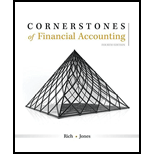
Debtholders receive note contracts, one for each note, that describe the payments promised by the issuer of the debt. In addition, the issuing corporation frequently enters a supplementary agreement, callcd a note indenture, with a trustee who represents the debtholders. The provisions or covenants of the indenture may place restrictions on the issuer for the benefit of the debtholders. For example, an indenture may require that the issuer’s debt to equity ratio never rise above a specified level or that periodic payments be made to the trustee who administers a “sinking fund" to provide for the retirement of debt.
Consider Roswell Manufacturing’s debt indenture, which requires that Roswell’s debt to equity ratio never exceed 2:1. If Roswell violates this requirement, the debt indenture specifies very costly penalties, and if the violation continues, the entire debt issue must be retired at a disadvantageous price and refinanced. In recent years, Roswell’s ratio has averaged about 1.5:1 ($15 million in total liabilities and $10 million in total stockholders’ equity). However, Roswell has an opportunity to purchase one of its major competitors, Ashland Products. The acquisition will require $4.5 million in additional liabilities, but it will double Roswell’s net income. Roswell does not believe that a stock issue is feasible in the current environment. The Financial Accounting Standards Board issued a new standard concerning accounting for post employment benefits, which is strongly supported by the Securities and Exchange Commission. Implementation of the new standard will add about S2 million to Roswell’s long-term liabilities. Roswell’s CEO. Martha Cooper, has written a strong letter of objection to the FASB. The FASB received similar letters from over 300 companies.
Required;
1. Write a paragraph presenting an analysis of the impact of the new standard on Roswell Manufacturing.
Want to see the full answer?
Check out a sample textbook solution
Chapter 9 Solutions
Cornerstones of Financial Accounting
- Financial Accounting Question please answerarrow_forwardA company paid $12,000 for a one-year insurance policy on October 1. What amount should be reported as Prepaid Insurance on the December 31 balance sheet? A. $3,000B. $9,000C. $12,000D. $0arrow_forwardNo chatgpt 9. In a perpetual inventory system, what happens when goods are sold?A. Only sales revenue is recordedB. Inventory and cost of goods sold are updated immediatelyC. Inventory is updated at the end of the accounting periodD. Only cost of goods sold is recordedAnswer: Barrow_forward
- 9. In a perpetual inventory system, what happens when goods are sold?A. Only sales revenue is recordedB. Inventory and cost of goods sold are updated immediatelyC. Inventory is updated at the end of the accounting periodD. Only cost of goods sold is recordedneed helparrow_forwardCan you demonstrate the accurate method for solving this financial accounting question?arrow_forwardWhat effect does recording depreciation expense have on the accounting equation?A. Increases assets and increases equityB. Decreases assets and decreases equityC. Increases liabilities and decreases equityD. No effect on assets or equity No AIarrow_forward
- No ai 9. In a perpetual inventory system, what happens when goods are sold?A. Only sales revenue is recordedB. Inventory and cost of goods sold are updated immediatelyC. Inventory is updated at the end of the accounting periodD. Only cost of goods sold is recordedAnswer: Barrow_forwardSolve this question with accounting questionarrow_forwardHello tutor solve this situation with accounting questionarrow_forward
- What effect does recording depreciation expense have on the accounting equation?A. Increases assets and increases equityB. Decreases assets and decreases equityC. Increases liabilities and decreases equityD. No effect on assets or equity helparrow_forwardWhat effect does recording depreciation expense have on the accounting equation?A. Increases assets and increases equityB. Decreases assets and decreases equityC. Increases liabilities and decreases equityD. No effect on assets or equityarrow_forwardFinancial accounting questionarrow_forward
 Cornerstones of Financial AccountingAccountingISBN:9781337690881Author:Jay Rich, Jeff JonesPublisher:Cengage LearningPrinciples of Accounting Volume 1AccountingISBN:9781947172685Author:OpenStaxPublisher:OpenStax College
Cornerstones of Financial AccountingAccountingISBN:9781337690881Author:Jay Rich, Jeff JonesPublisher:Cengage LearningPrinciples of Accounting Volume 1AccountingISBN:9781947172685Author:OpenStaxPublisher:OpenStax College

